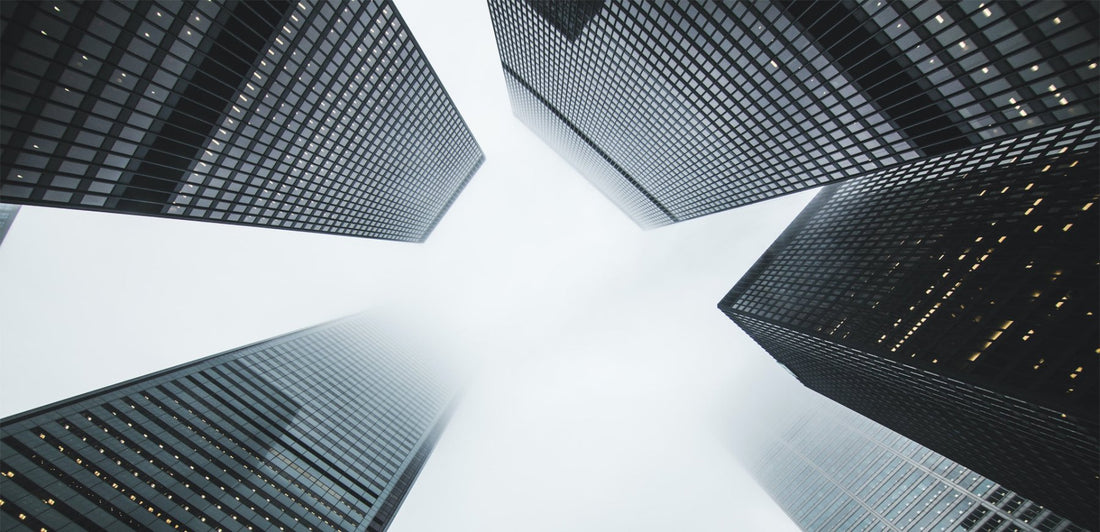More than half of the human population lives in cities, a stat that’s set to rise to 70% by 2050. And who can blame us? Urban environments are exciting, culturally diverse and full of opportunities. But they can also be places of loneliness, division and - especially at the moment - extremely high temperatures! Most modern cities have been built around the car, a fact that has reduced the area available for green spaces, pushed pedestrians and cyclists to the margins, and increased air pollution. City development has involved intensive use of unsustainable materials like concrete (which has a high footprint) and inefficient energy use.
An increasing awareness that cities could be so much better for the people (and animals) who live in them, matched with a worldwide need to slash emissions, has created a buzz around sustainable urban living.
What is sustainable urban living?
Sustainable urban living covers a lot of ground both literally and conceptually. It involves rethinking urban spaces to be more participatory, environmentally friendly and resource efficient. Urban sustainability could involve “hacking” the urban environment in order to reduce emissions and increase social inclusion. On the other hand, sustainable urban living can involve building more efficient cities from scratch.
Sustainable urban living is individual and collective.
Part of the magic of cities is the feeling that you can express your individuality while being part of something way bigger. In line with such thinking, this article covers sustainable urban living at the collective and individual level, exploring 3 radical ideas for green cities and offering 9 bite size tips for urban dwellers like you!
What are examples of sustainable urban living?
Sustainable urban living takes many different forms. For example, the town of Whitehall Borden in England has been undergoing a sustainable urban living transition since 2013 (a sign that these things take time!). The urban sustainability transformation has or will involve: carbon neutral projects, free loft insulation, and the creation of “a green loop” connecting all the town’s green spaces through one circular path. This can be thought of as an eco antidote to the ring roads that enclose many sprawling metropolitan areas like Greater London and Paris.
More ambitious projects include the partially complete sustainable city of Masdar in Dubai and a proposed floating city in Busan, South Korea. The Masdar master plan involves massive investment into eco-friendly buildings, zero waste projects, sustainability training and renewable energy sources. Meanwhile Busan’s floating city looks ahead to a reciprocal relationship with the ocean that will improve storm resilience.
These are eco cities in the truest sense because every facet of their planning is based on ecological principles. However, it’s hard to see how they will work for lower income communities, making them potentially socially unsustainable.
Finally, Europe's best sustainable capitals include Ljubljana in Slovenia - which has the greatest number of green spaces and a car-free centre - Copenhagen in Denmark - which has more bikes than cars - and Amsterdam in Holland - a great example of doughnut economics in practice! Speaking of which…
3 radical ideas for greener cities
The word economics already contains “eco”, so why aren’t markets more eco-friendly? Instead they incentivise growth and private ownership at the expense of the environment. Doughnut economics is a groundbreaking and popular alternative. Invented by Kate Raworth, it proposes to keep money-making within certain boundaries, preferring cooperation to competition. Here, the “doughnut” refers less to a tasty snack, and more to a visual aid for thinking about how sustainable living takes place when social foundations (water, electricity, housing etc) are met and planetary ceilings (biodiversity loss, ocean acidification etc) remain in tact. It represents the “just-right” sweet spot between social and environmental needs.
Kate Rayworth views cities as a key driver of this paradigm shift.
2. Green architecture
The first thing you’ll see when you type in “eco cities” are futuristic buildings cloaked in greenery. While these buildings (whether real or imaginary) are admirable flagships of sustainable architecture, green urban design is usually less flashy and more pragmatic, involving:
- Natural and effective ventilation
- Use of recycled materials
- Respecting the natural as well as built environment
- Minimal waste
- Connected to solar or wind power systems
- Affordable community owned housing
- Roof gardens
We might conceive of trees as mother nature’s best buildings: they help reduce the heat island effect, increase air quality and support many of the city’s non-human residents. A city full of trees would be an eco city indeed.
3. Unlock renewable potential
The fossil fuel industry receives a million dollars in government subsidies every minute… which makes it hard for renewables to keep up. But one study, based on more than 3000 cities worldwide, found that “that every city has massive potential to cost-effectively boost renewable energy use at the local level.” Urban areas are responsible for a massive portion of carbon emissions, so this approach has to be on the table.
Over to you
While these big urban sustainability ideas are worth exploring in more detail, we know many readers will be thinking, “okay, but what can I do?” Well, the individual dimension of sustainable urban living paradoxically involves being more active in your local community! This is what makes sustainable cities better places to live: they’re built around the values of community and cooperation.
A personal checklist of sustainable urban living solutions
- Cycle everywhere
- Use public transport (when not cycling!)
- Shop local
- Grow your own herbs
- Join a community project / garden
- Get a houseplant or two!
- Vote for green policies
- Press your local government to be more sustainable
- Invest in solar panels
The next step in your sustainable journey…
Now you’ve learnt all about sustainable urban living, you might want to check out our other posts on sustainable shopping and sustainable tourism.









